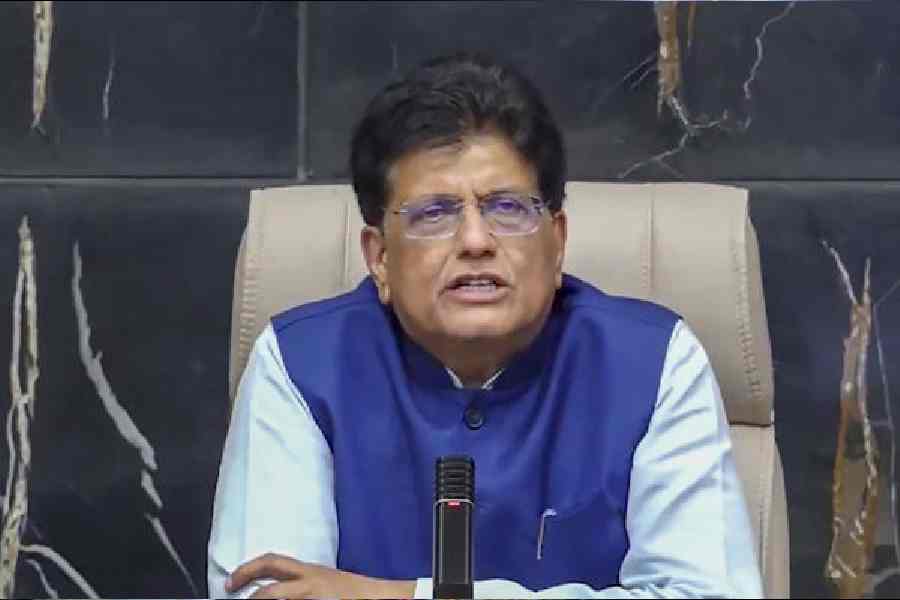India is feeling the immediate whiplash from Russia’s full-throttle invasion of Ukraine in the form of higher oil prices and stock market turmoil. Global crude prices soared by more than $7 on Thursday, day one of Russia’s assault, with more price hikes seen in the pipeline, while the eruption of hostilities has wreaked carnage on share markets.
Brent Crude, which is one of the benchmarks for global oil prices opened at $98.08 and then soared to a day high of $105.79 once it became clear that Russia had launched a full-scale attack on its neighbour.
Finance ministry officials met late into the evening Thursday to consider contingency plans to counter the fallout from Russia’s self-proclaimed “demilitarisation and de-Nazification campaign” against Ukraine. The conflict is coming at the worst time for India as it seeks to dig out economically from the pandemic.
Rising crude prices threaten to become a “major macro headwind for the Indian economy,” says V.K.Vijayakumar, Geojit Financial Services’ chief investment strategist. He warns that the trade deficit could widen and the rupee could fall. Further, he added, retail inflation, which breached the central bank’s upper tolerance level last month to hit 6.01 per cent, could climb further.
India’s petrol prices haven’t been hiked since November when campaigning began for the elections to five state assemblies. That’s more than 110 days that prices have stayed steady – almost an all-time record. India imports some 80 per cent of its oil needs.
At the time campaigning for the state polls began, oil prices were hovering in the low $80s so big hikes at the pump look certain once the elections are out of the way, analysts say. (As a reminder, oil prices rose steeply in the wake of both the 2019 general elections and after the 2016 state elections).
Analysts are predicting that global oil prices could climb to anywhere between $125-$150 a barrel in the coming months which could deal a significant hit to India’s economy. India imports only one per cent of its total oil imports from Russia, but global oil prices are currently at their highest levels since August 2014,
And because higher fuel prices will boost inflation, that will mean that the central bank will have to turn more hawkish despite its desire to keep interest rates low to propel economic growth. “Higher crude oil prices will keep CPI inflation higher for longer, obliging the RBI to raise rates more than the two hikes we expected in August-December 2022,” said ICICI Securities in a note.
At the last meeting of the Monetary Policy Council, member Mridul Saggar flagged the geo-political tensions in Europe as a “significant risk.” In the meeting minutes released Thursday, he noted that “the Indian crude oil basket is up nearly 25 per cent over the previous two months” and warned that “if it translates into oil and gas prices spiking, we will need to adjust macro-economic policies.” And that, simply put, means higher interest rates which could result in further lowering of growth forecasts that range from 8 per cent to 9 per cent for the next fiscal year.
The only way for the government to avoid higher petrol and diesel prices and keep a lid on fuel-driven inflation is for it to cut excise duties which would weaken state finances further.
Mumbai’s exchanges were also the worst hit in Asia, falling to their lowest levels in almost two years, as investors sought out safe-haven assets in which to take refuge. On Thursday the BSE Sensex tumbled 2,700 points and that followed days of weakness as investors fretted about climbing crude prices and rising geopolitical tensions. The is yet another drag on India’s stock markets which have shed nearly 11 per cent from their October peak.
Altogether foreign portfolio investors have pulled out a net of Rs 51,703 since the start of January Also on Thursday, greasing the markets’ slide, was the expiry of the February derivatives, a day on which brokers have to settle dues. Analysts said without positive local factors to spur optimism shares would follow global trends.
Among the domestic losers, predictably enough with oil prices rising, are aviation firms. Shares of InterGlobe Aviation, parent of IndiGo whose shares lost as much as 7 per cent.
There are some potential positive repercussions from the conflict, analysts say. With the EU as India's largest export market, the conflict could create greater demand for Indian steel, engineering and other goods as this country is an alternative supplier due to supply disruptions to the EU. Other commodities including natural gas, nickel and aluminium have also climbed to their highest levels in the last decade.
Meanwhile, the rupee, already Asia’s worst-performing currency, also took it on the chin, losing 109 paise to the dollar to close at 75.65 rupees. India though has a hefty $630.2 billion in foreign exchange reserves to intervene to support the currency.
Russia is also the second largest producer of natural gas and prices of the commodity have soared peaking both in Europe and Asia at around $60 in December. LNG had been below $10 during the first half of last year. On a more long-term basis LNG will be hit by Germany’s cancellation this week of the Nord Stream 2 pipeline which was to have supplied much of Europe’s needs.
India’s direct imports from both Russia and Ukraine are not huge but we are almost certain to be impacted by globally rising prices of commodities like oil and natural gas. Russia is the world’s third-largest oil producer after the US and Saudi Arabia.
Ukraine and Russia together account for almost half the world’s grain imports and competition for supplies could have an indirect impact on the Indian market even though we don’t import directly from either country.
Indian brokers predicted market volatility would be likely for quite some time though some reckoned that markets could come back quickly if the military campaign turned out to be a short one. In that case, foreign buyers might even be tempted back to India as one of the world’s more stable markets. If there is one piece of advice to investors, analysts say it is to ‘hold you’re nerve and don’t panic-sell.’
On the defence front. India is still buying S-400 missiles from Russia despite US disapproval of the transaction. The threat of US sanctions could rise under the Counter America’s Adversaries Through Sanctions Act (CAATSA) in the wake of the Russia-Ukraine conflict. The US is aware that India urgently needs the missiles in the wake of the Ladakh border standoff with China but the Russian move into Ukraine could lead to the US getting tough on this transaction.
There’s been no word yet from the government whether the sinking stock markets could affect the timing of LIC’s planned mega-IPO which was expected to be listed between March 10-15. The government is looking to use the roughly Rs 8-billion proceeds from the issue to close its budget deficit and therefore needs it to happen before the end of the financial year in end-March.










